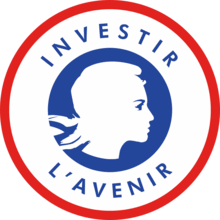Methods and decision tools for the sustainable management of babaçu palms in pasture
Goals
The objective of this project is to provide methods and decision support tools for the sustainable management of babaçu palm in Brazilian pastures. To this end, four complementary research axes were chosen: (1) Collection and analysis of biological and ecological data (existing literature and interactions with the CNPq/IRD/UFRJ-Relais project), (2) Analysis of anthropic harvesting practices around a native resource / and general policy, (3) Construction of a population dynamics model, (4) Use of information from very high spatial resolution satellite images (detection of adult palms) and high spatial resolution (history of the plots) in interaction with the CNES-TOSCA CICTOOB project
Actions
The population dynamics of the palm tree was studied on the PA-Benfica, Itupiranga commune, Brazilian state of Pará. Annual measurements of babaçu population structure were carried out in 25 transects and in the 3 environments pasture, secondary forest, primary forest in 2013, 2014, 2015 and 2016. At the same time, a hierarchical Bayesian model was chosen as the model type. Socio-economic data were collected in the field in 2014 and 2015 in Benfica and in 2 other communities close to it and comparable in terms of use by the populations, but also in 3 other communities in the municipality of Brejo Grande, characterised by a higher use of babaçu. Work combining in situ palm location data with automatic detection of these palms was carried out. The history of land use was reconstructed between 1987 and 2011 using Landsat satellite images.
Results
In Benfica the babaçu is an alternative resource, however its invasiveness makes it a threatened species by fazendeiros, and even sometimes, increasingly by family farmers (Macedo, 2015). The implementation of protection measures, with a view to continuing its use, requires knowledge of the ecology of this species, and in particular of its population dynamics. In this context, a multinomial hierarchical model approach that relies on aggregated data (sum of individuals per stage) and can integrate the hierarchical structure of the data was implemented. This approach is part of a Bayesian analysis of the modelling framework with MCMC algorithms for the estimation of mortality, growth and recruitment rates. Mortality and growth rates are estimated for all six life stages of the babaçu life cycle (Sirakov, 2016, Sirakov et al., 2016). The results obtained show a high interannual variability for the mortality rate in stage 1. The values obtained are significantly lower than the estimates published by Anderson (1983) and Anderson and Balick (1988) for another experiment in Brazil. For the following stages the mortality rates are very low. With the exception of the transition between stages 3 and 4 (less than 1%), the probability of transition is significant (10% to 28%). Therefore, these results showed a clear bottleneck at stage 3. This bottleneck is likely to increase the number of years needed to reach adulthood. This model allows us to simulate the possible evolution of the population for the next 5, 10 or 15 years, with 0, 10 or 25% fruit harvesting (Santos et al., in preparation). In parallel our remote sensing studies (CNES/TOSCA CIC-TOOB project) have allowed us to develop an algorithm for the detection of large circular crown palms, including babaçu in open environments (pastures with low and medium palm density) (Demagistri et al., 2014). It was used to produce the palm density map in open areas, from the year 2013, for the community of Benfica. From our field data and this map, the density of babaçu in this area could be calculated (Santos et al, 2017).
Prospects
Future studies will focus on (1) the study of competition between babaçu and forage species in pastures, (2) the production of a new algorithm to detect babaçu in closed environments, (3) the modelling of the spatial distribution of babaçu at various stages of its life cycle.
- Project Number1202-072
- Call for project
- Start date :1 January 2014
- Closing date :31 December 2016
-
Research units in the network


